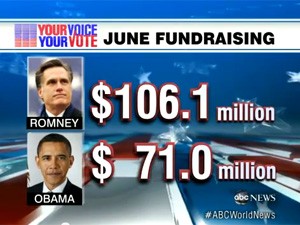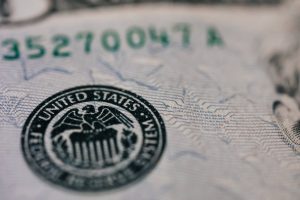With four months to go before the November elections, the topic of cash raised by presidential candidates or their PACs is pretty much eclipsing issues in recent headlines.
As NPR predicted earlier this year, it’s shaping up to a be a billion-dollar campaign season, and that’s only for the top job — it doesn’t count spending by hundreds of candidates at state-level elections, nor the spending by proponents and opponents of the many other initiatives that voters will decide on this fall. (Here’s a handy reference guide to 2012 state elections and ballot initiatives by Ballotopedia.)
All of which is prime fodder for business writers; in addition to influencing the shape and tenor of our government, how does any of this spending — which, as the NPR story noted, is about on par with the entire potato-chip industry in the U.S. — trickle down to businesses or workers at the local level?
Clearly, buying media space and time is how the biggest chunk is spent; according to this analysis from The Fiscal Times, about 60 percent goes to TV spending alone. The article is a good read because it reflects the effect on media companies, including radio and billboard operators; if you have any of those conglomerates headquartered near you, the news peg is obvious. Even if you don’t, though, checking in with local affiliates about every-four-year campaign dollars and their long-term effects on station health – especially if you’re in a perennial swing state where media operators can pretty much plan on the dollars – would be an interesting take.
Meanwhile, check out this gold mine that ProPublica published back in March; it’s an interactive flow chart of sorts that details campaign spending down to the companies and dollar amounts on the receiving end. It’s based on Federal Election Commission data and a programming interface developed by The New York Times. While clearly the big recipients are large media firms and consulting agencies, If you run your cursor down the list of payees on the right-hand side of the graphic, you’ll start to hit the small- and medium-sized firms and may find a couple in your area.
And keep in mind this merely reflects presidential campaign spending; use it to glean ideas of how state lawmakers are spending their campaign cash. Direct mail is a biggie at that level; try to find some print shops, regional marketing agencies and others who might gain revenue by handling campaign jobs.
Payroll processing, transportation, health insurance for paid campaign staff, office supplies, food service, computer equipment — someone is making money from the minutia of running these election efforts. Here’s an interesting site, for example: ElectionMall.com, “Where every day is a campaign,” as the tagline says. The company apparently offers a variety of digital services from web development to e-mail blasts to data management to a “campaign cloud” for state-level politicians. OnlineCandidate.com and similar services abound; ask your state campaigns who’s building their websites and you may turn up an interesting local small biz profile. Same goes for the promoters and detractors of ballot measures; what are those groups spending money on?











